Ever wondered what makes a sweater so cozy or a scarf so light and airy? It’s all thanks to Stitch Patterns, the secret language knitters use to transform yarn into beautiful and functional creations.
Imagine knitting as a conversation between your needles and the yarn. By simply switching different stitches, knitters, or knitting machines can create endless variations in texture, drape, and warmth.
Think of stitch patterns like spices in a kitchen. A basic knit stitch is like salt and pepper – essential but a little plain. But add in some cables for texture (like throwing in some herbs!), or pointelle for breathability (like using citrus zest!), and suddenly your knitwear becomes a masterpiece!
There’s a whole world of stitch patterns, each with its own personality. We’ll dive into some of these popular stitch patterns, showing you how they work and what kind of projects they’re perfect for.
Get ready to unlock the magic of knitwear and create something extraordinary!
I. Common Stitch: Plain & Rib Stitches
Let’s delve into two foundational stitch patterns that play a crucial role in garment construction: PLAIN STITCH (also known as jersey stitch) and RIB STITCH. Mastering these patterns unlocks a world of creative possibilities for building beautiful and functional knitwear.
-
Plain Stitch: The Versatile Workhorse
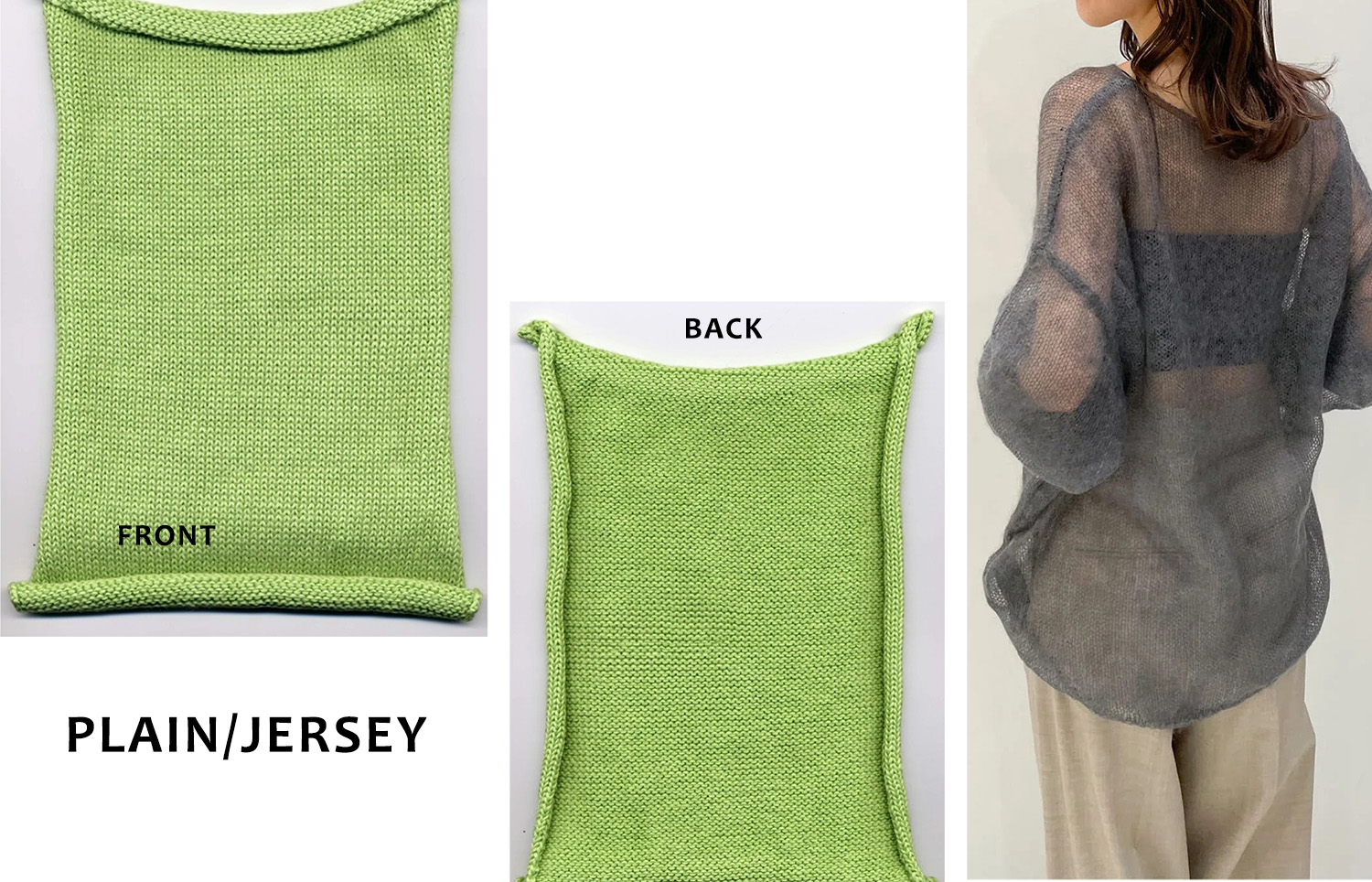
Plain stitch, achieved by alternating knit and purl stitches in each row, forms the basis for countless garments. This stitch pattern offers several construction advantages:
- Smooth Fabric: The alternating knit and purl stitches create a smooth, even fabric surface. This makes plain stitch ideal for garments like t-shirts, dresses, and lightweight scarves where a clean drape is desired. The smooth surface also allows for showcasing intricate stitch patterns or embroidery effectively.
- Drape and Flow: Plain stitch creates a fabric with a lovely drape. The alternating stitches introduce a slight give, allowing garments to flow and move gracefully with the wearer. This makes it perfect for garments that benefit from a fluid silhouette, like summer dresses or tunics.
- Seaming and Finishing: Plain stitch offers a neat and stable fabric for seaming. The consistent stitch structure makes it easier to match seams and create clean garment edges. This simplifies finishing techniques like crocheting borders or sewing hems, leading to a professional final product.
-
Rib Stitch: Adding Structure and Elasticity

Rib stitch takes knitwear construction a step further by creating alternating columns of knit and purl stitches. This technique offers several benefits for garment design:
- Texture and Dimension: Rib stitch creates a delightful ribbed texture that adds visual interest and dimension to your projects. This textured surface can elevate a simple garment design and add a touch of detail.
- Elasticity and Fit: The key strength of rib stitch lies in its elasticity. The alternating knit and purl stitches allow the fabric to stretch and recover easily, making it ideal for cuffs, hems, necklines, and collars. These areas require some stretch to fit comfortably around the body and maintain their shape over time.
- Shape Retention: The elasticity of ribbing also helps garments maintain their overall shape. This is crucial for fitted garments like sweaters or hats, where you want the knitwear to retain its intended structure after washing and wear.
Plain stitch offers a smooth canvas for showcasing other design elements, while rib stitch adds texture and structure for specific garment components.
II. Popular Stitch Patterns
Ready to level up your knitting? Let’s explore some popular stitch patterns! These patterns add fun textures and designs to your projects, taking your knitwear to the next level.
- Cable Stitch: Textured Elegance
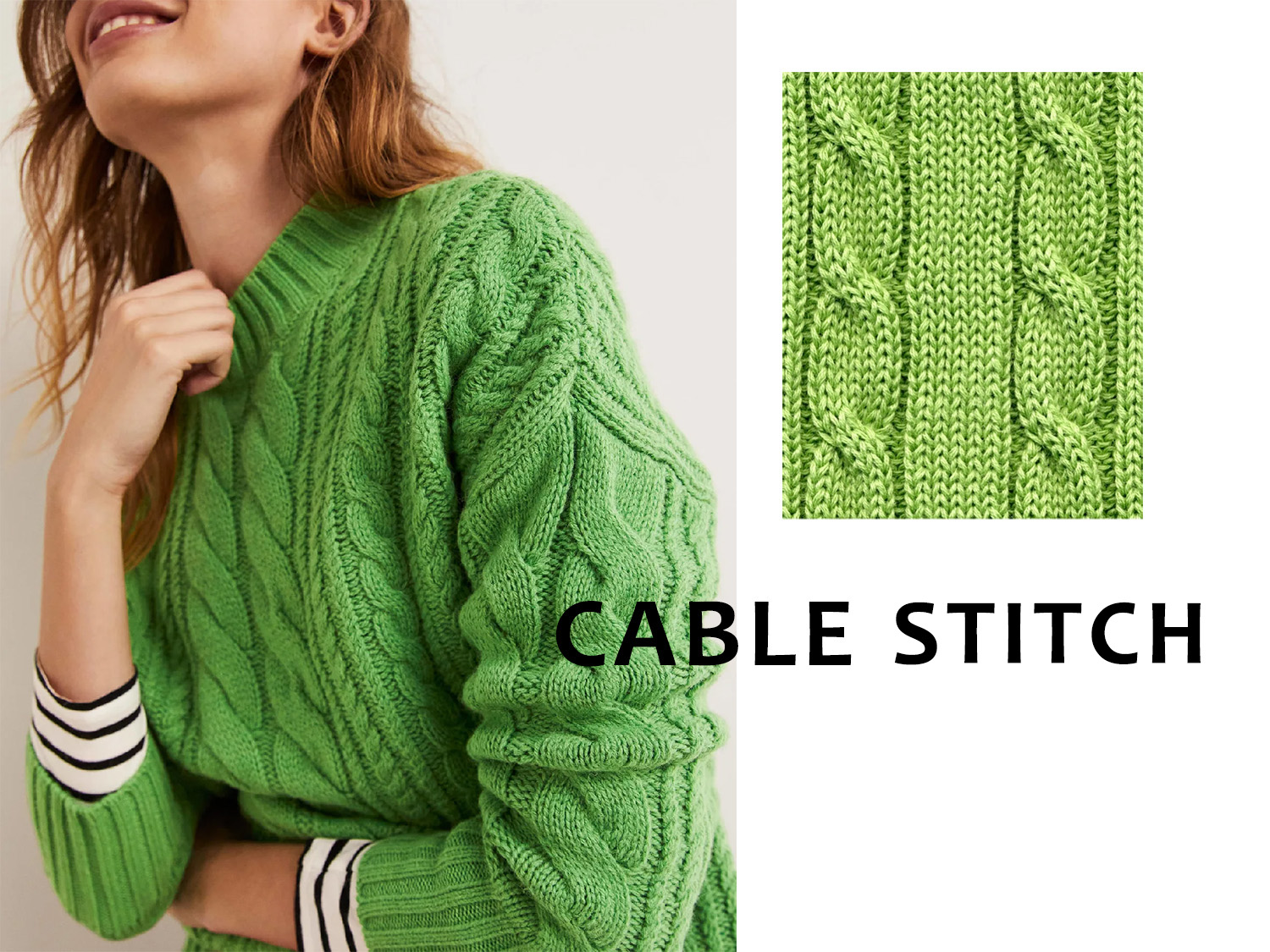
Cable stitches add a touch of sophistication to your knitwear with their raised columns and intertwined stitches. This effect is achieved by strategically shifting groups of stitches back and forth on the needle using a cable needle (a handy tool for cable projects).
Key Properties:
- Visual Interest: Cable stitches create stunning textured details that elevate even the simplest garment design.
- Texture: The raised cables add a delightful tactile dimension to your projects, making them a joy to wear and create.
- Warmth: The additional fabric created by the raised cables adds a touch of extra warmth, perfect for cozy sweaters and hats.
Pointelle Stitch: Light and Airy
Pointelle stitch is all about creating delicate open spaces within the fabric. This is achieved by strategically skipping stitches and working yarn overs (where you wrap the yarn around your needle before knitting the next stitch).
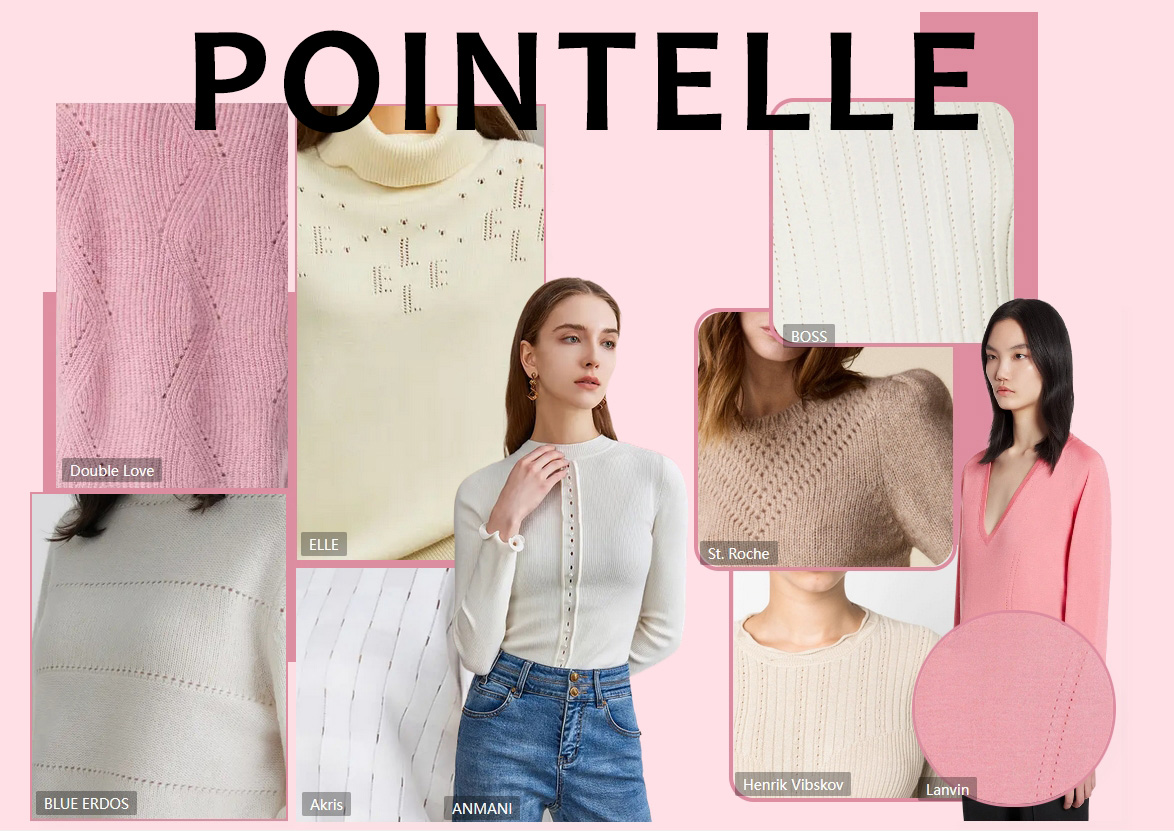
Key Properties:
- Breathability: The open spaces in pointelle stitch allow for excellent air circulation, making it a perfect choice for lightweight summer tops and scarves.
- Lightweight Fabric: The skipped stitches result in a less dense fabric, which is ideal for projects where weight and drape are a concern.
- Delicate Drape: Pointelle stitch creates a beautiful, flowing drape that adds a touch of elegance to your knitwear.
Full Cardigan Stitch: Functional and Classic
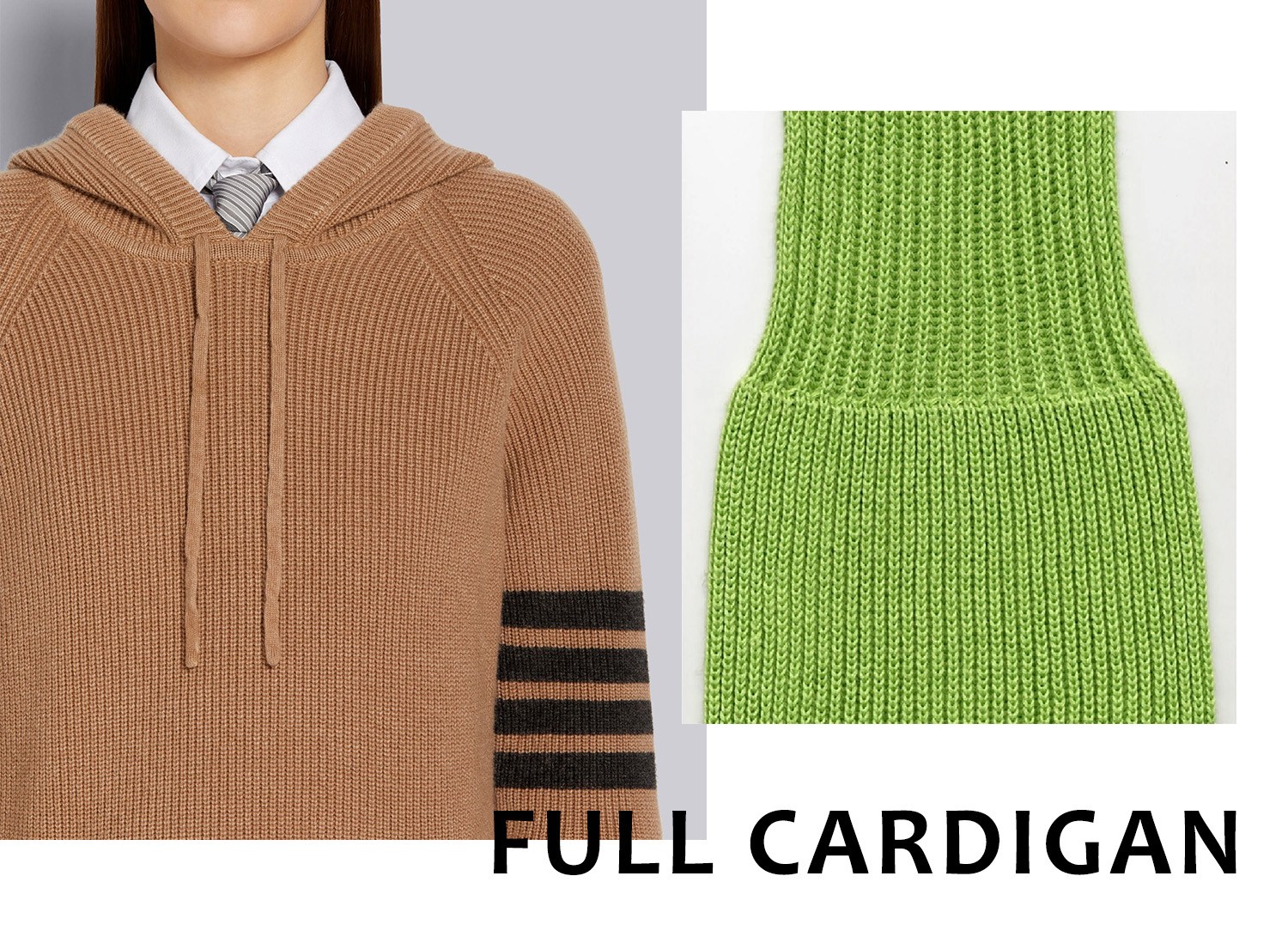
The full cardigan stitch is a tucked rib knit stitch, which creates the same series of wales (lengthwise ridges/ribs) on both the face and the back of the fabric. These tucked stitches create a raised ridge that adds visual interest and a touch of texture.
Compared to regular rib stitch, the full cardigan stitch creates a slightly thicker and more substantial fabric, offering additional warmth and structure.
Half Cardigan Stitch: A Tailored Touch
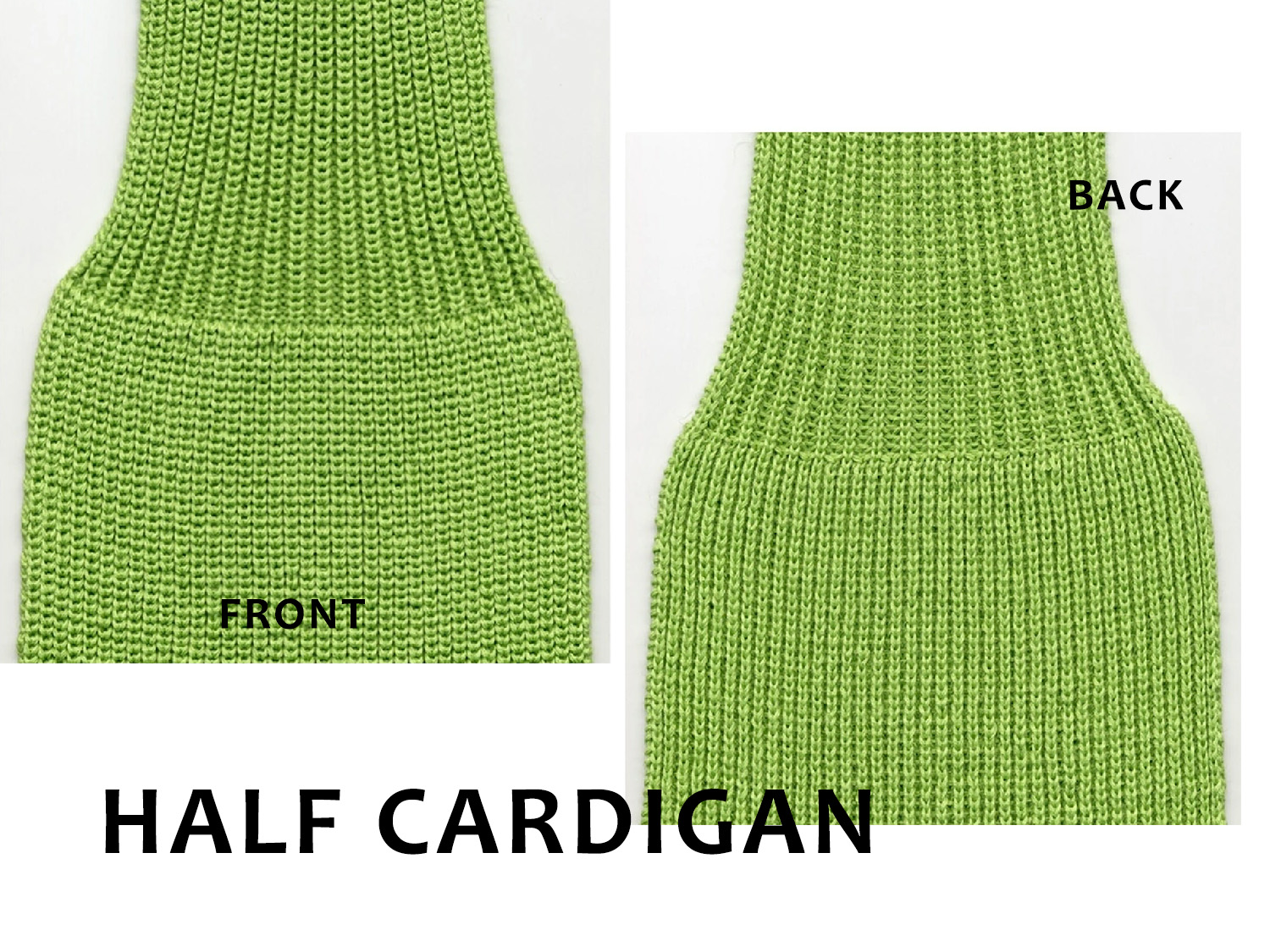
The half cardigan Stitch is a variation of the full cardigan stitch. The spaces between the wales (lengthwise ridges/ribs) on the face of the fabric are closer together than those of the Full Cardigan Stitch. The back of the Half Cardigan knitted fabric has the same series of wales as the Full Cardigan.
Compared to the full cardigan stitch, the half cardigan stitch creates a less bulky effect, ideal for garments where a lighter weight is desired. However, it is still not as thin as the plain stitch.
Links Stitch: A Unique Take on Texture
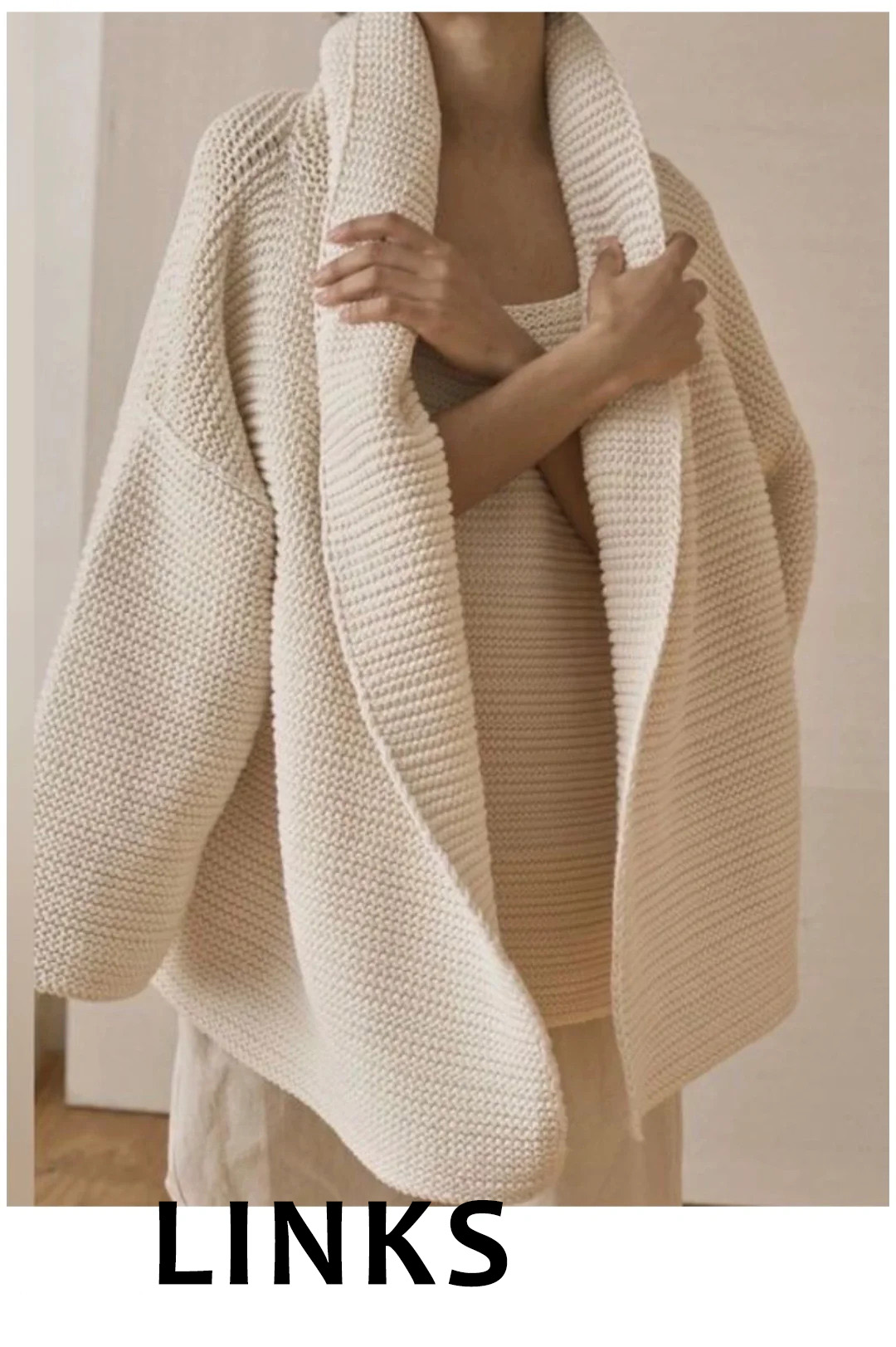
Links stitch, also known as lazy links stitch in hand knitting, creates a unique textured fabric with horizontal ridges.
Unlike plain stitch, which alternates knits and purls in each row, links stitch uses a technique called “smocking” to achieve its texture.
Links stitch is often combined with vertical ribbing to create a lattice effect, adding further visual intrigue to your knitwear. Compared to plain stitch, links stitch may be slightly thicker due to the additional yarn used in the wrapping process.
Key Features:
- Textured Fabric: The horizontal wraps create delightful ridges that add visual interest and dimension to your projects.
- Stretch and Recovery: Links stitch offers a moderate amount of stretch and recovery, making it suitable for garments like hats, scarves, and even blankets that drape nicely.
Ottoman Stitch: Textured Dimension
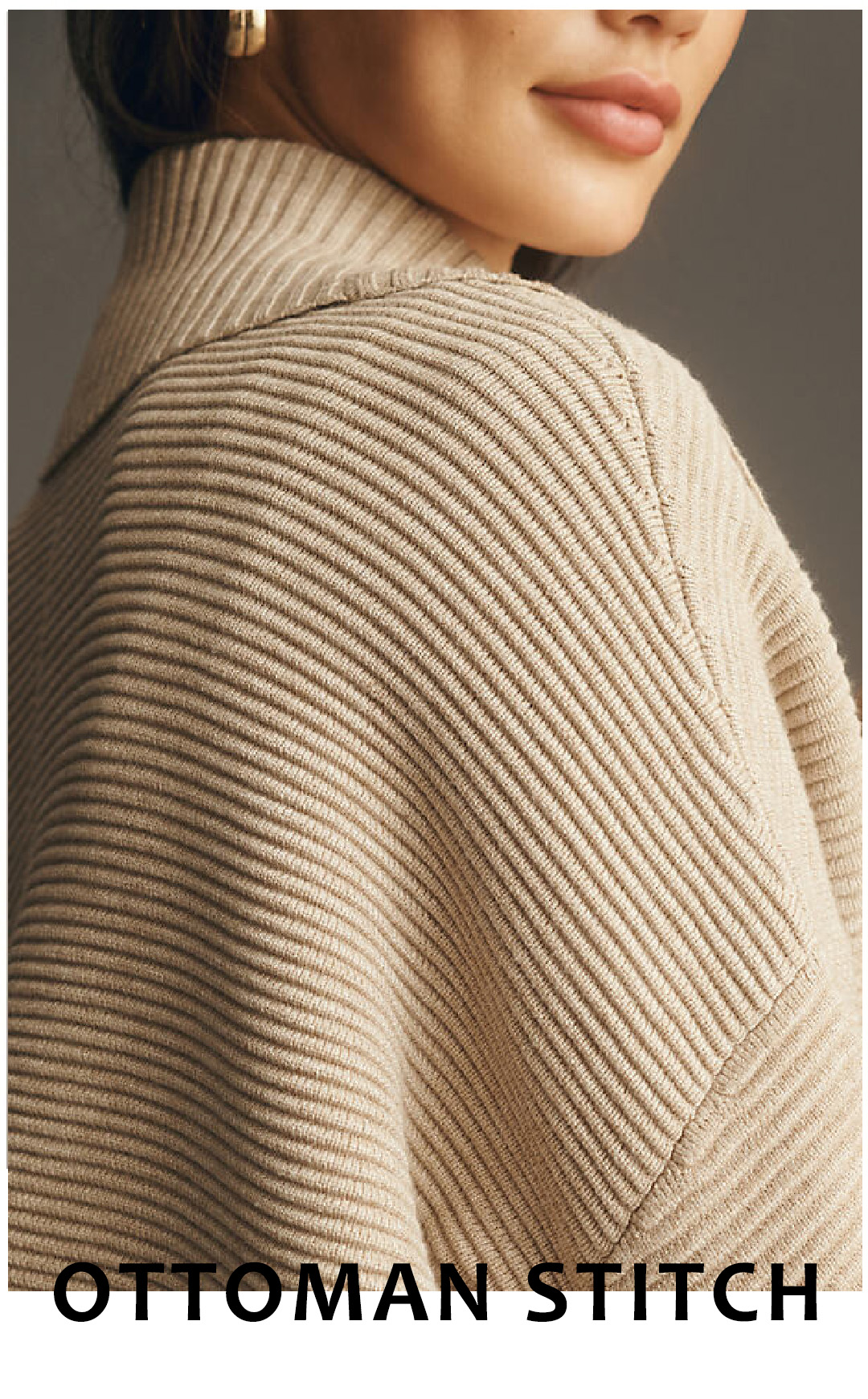
The ottoman stitch adds a delightful textured dimension to your knitwear with its raised, bumpy surface. This effect is achieved by strategically knitting and purling stitches in a specific sequence. Ottoman stitch creates a visually interesting fabric that adds a unique touch to a variety of projects.
Key Features:
- Textured Surface: The ottoman stitch creates a raised, bumpy texture that adds visual interest and a delightful tactile experience.
- Versatility: This stitch pattern works beautifully for blankets, pillows, bags, and even garments that can benefit from a touch of texture and warmth.
With so many stitch patterns available, the possibilities are endless! Consider the desired look, functionality, and weight of your project when selecting a stitch pattern. Experiment and have fun exploring these techniques to create unique and beautiful knitwear!
Intarsia stitch, Full Milano stitch, Jacquard stitch… the list goes on! We’ve only scratched the surface of the amazing stitch patterns waiting to be discovered. In the next section, we’ll explore a treasure trove of additional stitch patterns that will tantalize your senses with their textures, patterns, and design potential!

 English
English Deutsch
Deutsch Français
Français Italiano
Italiano Español
Español Русский
Русский Polski
Polski Nederlands
Nederlands Svenska
Svenska

